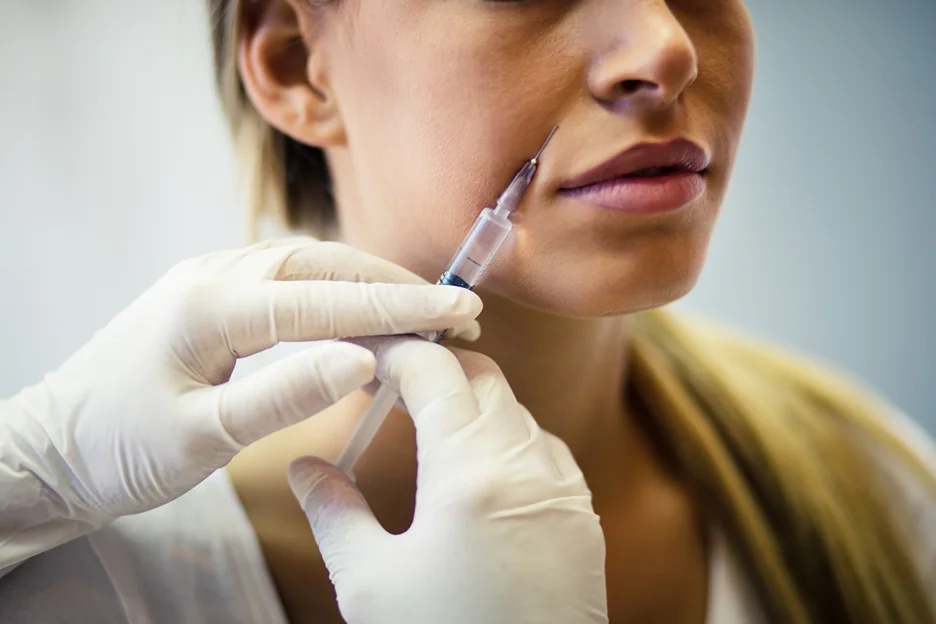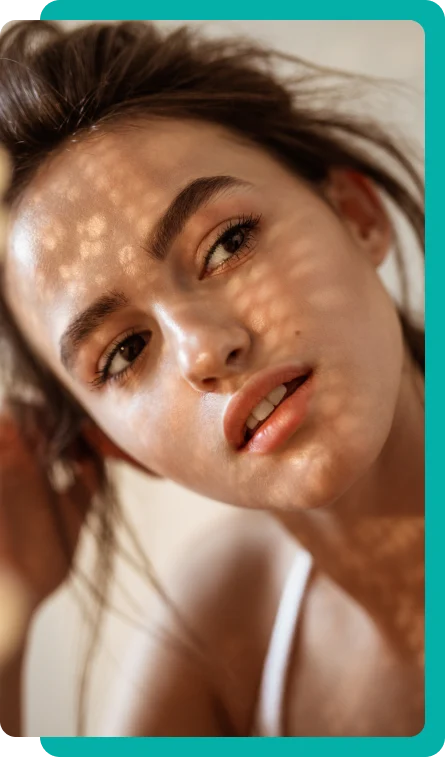For Patients
About
For Providers
Locations
Blog
Contact
Menu
We demystify why those pesky lines happen and outline the foolproof ways injectors restore flawless, crease-free contours.
Creases can temporarily form after cheek filler injections until the filler settles, but pronounced or lasting creases may need minor adjustments or revisions by your injector. They can often be corrected by dissolving the filler or having an experienced injector massage it into place.
Why Do Fillers Sometimes Cause Creases?
Dermal fillers are gel-like substances injected under the skin to volumize, lift and contour areas of the face. When injected into the cheeks, fillers create a smooth, lifted look. But sometimes the filler can create an unnatural pleat or crease instead of blending seamlessly with your natural facial structure.
There are a few main reasons this creasing can occur:
Dermal fillers are designed to ultimately become integrated with your own facial tissues. But in the initial few weeks after injection, the filler is still quite mobile and able to shift positions. This movability makes the filler prone to creating small ridges or ripples on the skin until it settles properly.
The specific type and viscosity (thickness) of the dermal filler used can impact its ability to spread smoothly in the area. Some filler formulas are thicker than others, which increases the risk of developing tiny lumps or uneven areas.
How and where the injector places the filler also plays a key role. Injecting too much volume in one area versus dispersing it evenly can contribute to lumpiness. Improper injection depth or missing areas can leave the filler appearing irregular.
Your normal facial movements like smiling, squinting, or massaging the area can temporarily shift the positioning of freshly injected filler before it integrates. This dislodging creates valleys and ridges.
Every person's bone structure, skin elasticity, and facial proportions differ. Sometimes the way a specific amount of filler interacts with your unique anatomy results in an unintentional crease forming.
Don't worry - these creases and irregularities often resolve on their own once the filler settles and your body metabolizes it slightly. However, there are situations where the creasing may persist and need correction.

Most injectors advise waiting 2-4 weeks to allow initial swelling to subside and the filler to integrate before assessing the final results. At this point, any lingering significant creasing that creates an unnatural or asymmetric appearance should be evaluated.
You'll want to have your injector examine any pronounced creases, as they may indicate:
The good news is there are ways to smooth out these imperfections! Seeking revision from an experienced injector within 2-4 months provides the best chance for easy correction.
So be patient for those first few weeks post-treatment, but don't hesitate to schedule a follow-up if concerning creases remain.
Depending on the type and severity of the crease, your injector may recommend one of the following approaches:
Sometimes gentle massage and manipulation of the area can help mold and reposition stubborn filler material that's creating the crease. This option works best for minor irregularities.
For more severe or uneven creasing, your injector may recommend using an enzyme like hyaluronidase (for hyaluronic acid fillers). This dissolves and breaks down a portion of the filler to smooth out lumps or valleys.
Certain types of creases are actually better improved by adding a bit more filler product around the area to blend and fill in the crease. Your injector will determine if this approach is appropriate.
Using a small flexible cannula or needle, your injector can strategically reposition, redistribute, or add filler in targeted zones to smooth out the contours and eliminate ridges.
If the initial filler type used is determined to be the culprit, switching to another formula or viscosity may create better, smoother results for your facial structure.
Of course, the best approach is to avoid creasing in the first place. Always go to a qualified, experienced injector who understands proper cheek filler techniques. They will:
No matter the issue, experienced injectors have an arsenal of techniques to revise cheek filler and restore a naturally contoured, youthful look. Don't get too discouraged if you develop any unwanted lines or grooves – chances are good they can be easily addressed!

While some minor creasing may be unavoidable initially, there are proactive steps you can take to reduce the chances of developing significant or long-lasting irregularities:
Look for injectors who have extensive cheek augmentation experience and train regularly on proper injection techniques. Their skill makes a major difference.
Certain filler formulations like Restylane or Juvéderm tend to spread more easily and create smooth results for cheek augmentation based on their viscosity.
Rather than over-filling, start with a conservative amount and gradually build up volume over time to create a smooth integration into your facial structure.
It's good to gently massage right after injections to work out any potential uneven areas. But excessive or aggressive massage, especially in the following weeks, can shift the filler and create unintended spread or creases.
Follow all aftercare instructions carefully, including limiting exercise, alcohol, and certain medications that can increase swelling or bruising in the initial healing phase.
Remember that final results take 2-4 weeks, so trust the process initially. But also raise any lingering concerns about asymmetry or creasing with your injector so they can be addressed.
The more you partner with your skilled provider, the better your chances of achieving natural, crease-free definition from your cheek filler results!
For those who don't want the ongoing maintenance of temporary fillers, cheek implants may be an option to consider. These solid silicone implants create permanent cheekbone augmentation and don't carry the risks of creasing or revision that come with injectables.
Implants require a surgical procedure where they are positioned over the cheekbone area. The results tend to look extremely natural and last indefinitely. Plus there's no worry about gradual filler dissolution creating uneven effects down the road.
Of course, implants come with their own set of considerations like cost, recovery time, and potential risks. But for the right candidate, they provide permanent, predictable cheek enhancement.
Ultimately, the choice between fillers or implants comes down to your goals, lifestyle, and willingness to undergo surgery. Discussing the pros and cons of each with an experienced cosmetic professional can help determine the optimal approach.

Join Dr. Lanna & Dr. Doshi for a Transformation
Unlock the possibilities with our certified facial and oculofacial plastic surgeries. Attend our free webinar to find out how we can tailor solutions for you, with financing available to fit your budget.
